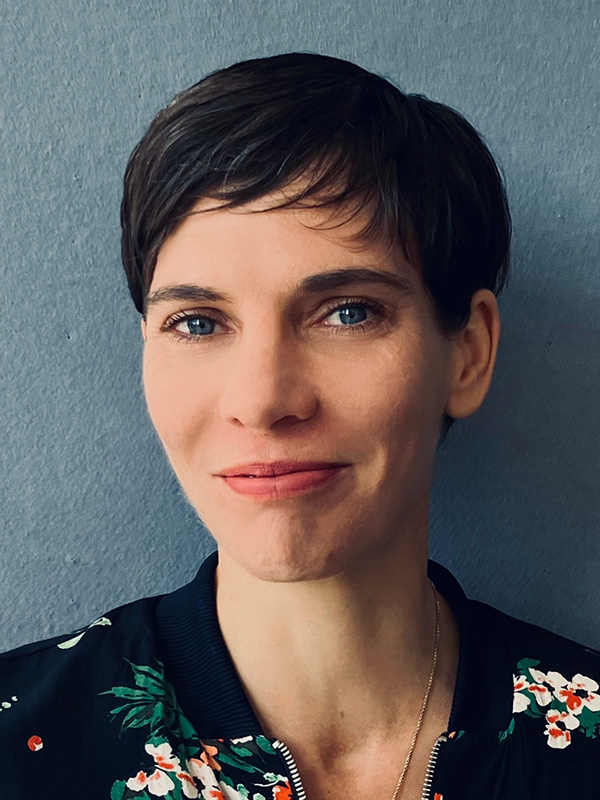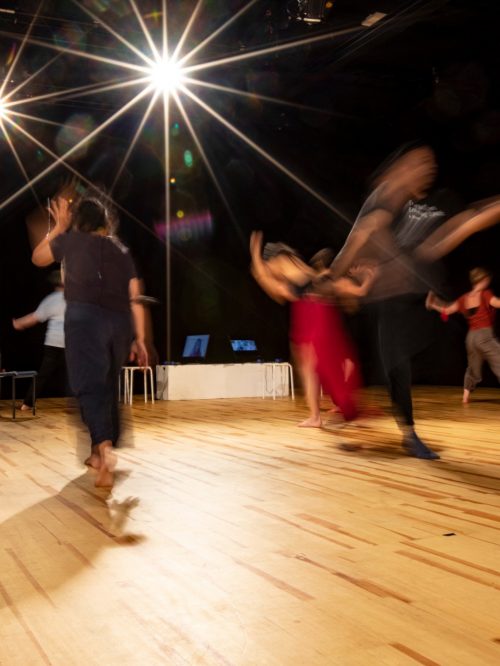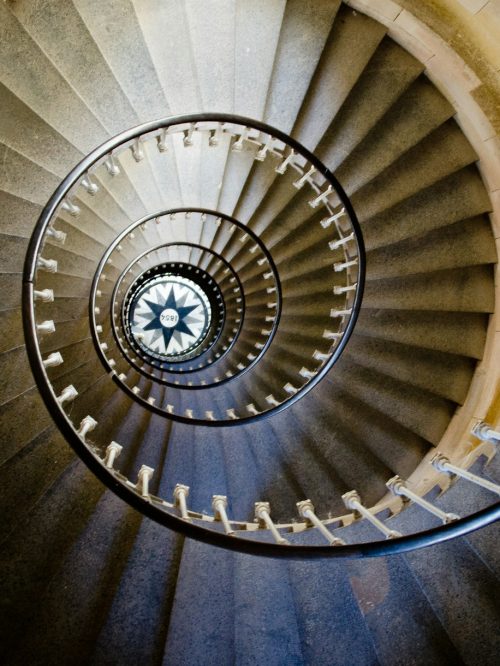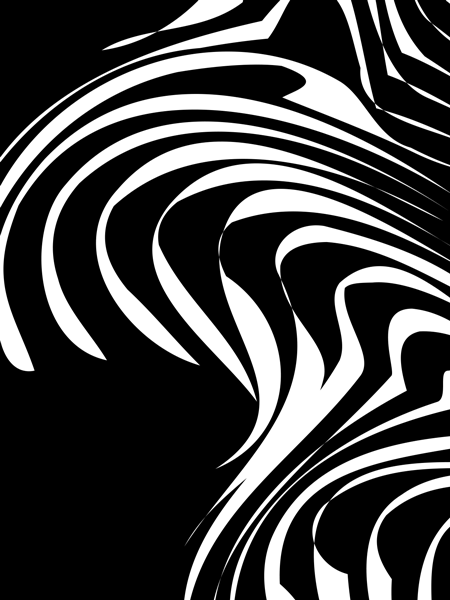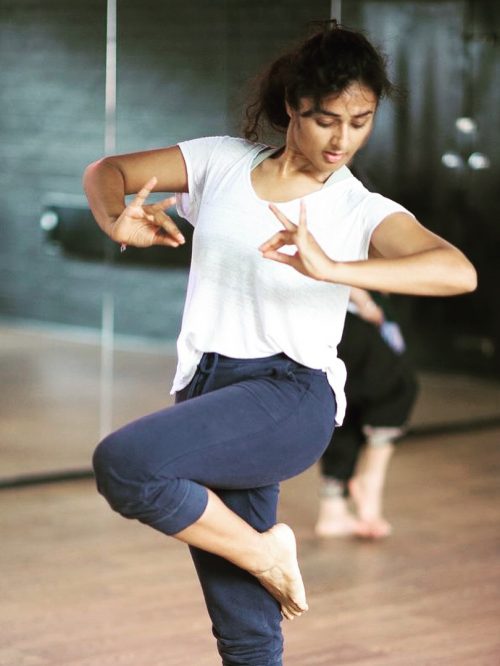Plaster that itches on the retina
I am Sarah. White, heterosexual, cis-gendered. I was born in the 1980s and grew up in a middle-class family of five in a small town in West Germany. I now live in Berlin, have moved and traveled quite a bit and am raising my Black son alone. I have been working in the performing arts for 15 years, in local, national and international contexts. I studied dramaturgy for theater at a conservative institution in Munich.
What determines my gaze? What is inscribed in my gaze? How is it socialized? How is it shaped, constructed? What disturbs my gaze? What unsettles it, stimulates it, challenges it? Can I trust my gaze? What do I fail to see? What do I actually see ?
These words are intended to show where I am speaking and writing from. What has shaped, continues to shape my view, my perspective on the world. What I have written here is an excerpt, a beginning. One thing is certain: the way I look at the world has a history. It is shaped, charged, marked. The gaze with which I look at productions in the performing arts is (consequently) also charged – not neutral. Or without preconditions or free of experience or lived experience – of one’s own history, cultural imprint. No gaze is.
Is my gaze piercing? Does it hurt? How cognizant am I of its limits? Can I expand my gaze? How? Do I always ‘look at’ things the same way? Can I train my gaze? What is the connecting process between seeing and understanding? Can I gaze incorrectly?
My job description as a dramaturge is based to a certain extent on my gaze. Certainly also on the knowledge I have gained, my ability to analyze and communicate – but it is also based on my gaze. I watch and experience dance and performances because it is part of my profession. As a dramaturge, I have to be able to watch professionally, so to speak. That is the expectation of colleagues, work partners, audiences and myself. For a long time, when I was still working predominantly with white artists contextualized in ‘the West”, I had a certain self-confidence. I was generally sure that my gaze and what emerged from it as a reflection was enriching, stimulating, and productive – for all my working partners. Healthy overconfidence. Encouraging naivety? Recklessness of a young professional – and/or joyful dedication to the task? All together.
What am I overlooking? How do I become aware that I am not seeing something? Does my gaze have to change from context to context in order to do justice to what I see? How flexible is the gaze? Is flexibility good? In what sense? Where does the movement I see come from? How is the space used and why?
Then came the cracks – not sudden, but gradual. The self-confidence crumbled. The plaster fell from his eyes. At last!?! The white crumblings were coupled with a steady stream of work with choreographers and artists from the so-called Global South, especially the African continent. Collaborations with artists from Chad, the Ivory Coast, Madagascar and Senegal emerged. Not just like that, but among other things through: my love and life story with a choreographer from Chad, a certain skill in the field of dramaturgy, access to structural support measures and an interest and fascination for the different artistic styles. The latter encouraged me to see as many productions as possible by artists from the African continent and the African diaspora.
These words are intended to show where I am speaking and writing from. What has shaped, continues to shape my view, my perspective on the world. What I have written is an excerpt, a beginning. One thing is certain: the gaze I cast on the world has a history. It is shaped, charged, marked. The gaze with which I look at productions in the performing arts is (consequently) also charged – not neutral. Or unconditional or free of experience or lived experience – of one’s own history, cultural imprint. No gaze is.
And how do you perceive the stage? Where does the understanding come from? What practice, tradition and technique can the movements performed be traced back to? What is the reference system of the movements?
I became addicted – traveled to festivals, read, had videos sent to me.
My knowledge and the feeling of becoming increasingly familiar with a certain subject matter grew. But: the more I saw and read, the more obvious became everything I didn’t see, couldn’t decode or simply experienced completely differently or even did not experience at all when attending the productions, as I am a white Western-European dramaturge. My gaze, the main pillar of my beloved profession, stood in my way. It was too narrow, too ignorant, too Western, too … – despite all the activities and efforts, it hadn’t really set out on a new path. Stuck. Code not recognized. No access possible.
Who determines how feedback is given and how criticism can function? What would a dramaturgy be and how should it be practiced if it is decolonized? What does it mean to decolonize dramaturgy in dance?
So it was stuck – the gaze – to familiar Western patterns of reception and viewing habits. Ouch. Admitting this to myself, telling myself that my curiosity and eagerness to learn were not in vain, but did not lead to a fundamental disruption and change in my learned viewing habits, was sobering. Also unpleasant: the realization that the tendency to rationalize, understand and want to prescribe everything is in a way a reproduction of colonial and consequently always racist patterns. Ouch.
What would dramaturgy be and how would it have to be performed if it were decolonized? What does it mean to decolonize dramaturgy in dance?
Breakdown. White noise. Pondering. Shame. Then the jolt: one has to question one’s own position, point of view, power, and influence on creative processes. Fundamentally so – but I had never learned that. I had never learned to name weaknesses or, let’s say, a lack of knowledge, to highlight them and see them as the start of a new encounter. Doesn’t help. Unlearning (not easy). Relearning (also not easy). Trying things out, asking oneself whether there is a way – as a dramaturg – to stay where I had landed, in the field of international and intercultural work.
How do identities encode themselves in dance through movements, dance practices, music and sounds? What constitutes specificity and how can we understand it, comprehend it?
To return to the gaze – my working tool – the question arose as to how after all I could broaden it, adjust it, make it more adequate with an eye on the various cultural contexts, understandings of the world, movement and art that this gaze encountered. The specifities of knowledge and the techniques that it encountered. Question(s).
Listen:
Please note: Audio is in German and English. You can find the full English transcription here [1].
When you listen to the explanations about dance and performances and the corresponding working methods and life paths on Listening Bodies, you will hear history, hear struggle, hear resistance and then see it much more clearly, in the works of the artists interviewed, but in my eyes also beyond that.
You can listen to all the podcasts here
[1] English transcript of soundfile:
Sarah: And then there followed the act of listening. A new love of listening. Suddenly. Perhaps out of calm, perhaps because of the pandemic, perhaps because ‘listening’ has been gaining in importance in various areas of art for a moment. In any case, all I wanted to do was listen: to artists; choreographers, performers & dancers talking about their work. With silence and time and without an audience discussion. And then I wanted to give artists and their knowledge from practice, their view of movement, body, space, artistic careers, political struggles and their inscription in the respective work a platform – others should also be able to listen to them. Because despite all the reading and research – that’s what was missing (for me): oral history about dance directly in to the ear!
Patrick Acogny: So what’s the difference between a street in Douala and a street for instance in Paris, in France, let’s say the Trocadéro? Are you free to choose where you are going to perform? Or is it so that in Europe you would have to perform where they tell you to?
Zora Snake: To me, public space … is about humanity. It is the first word that comes to my mind when I think of the streets in Cameroon where I grew up. It is about us humans. It’s not even so much about geography, the concrete physicality of the place, it’s about humanity. What it means is that creating in the public space in Cameroon is extremely rich and inspiring. You walk around in some neighborhoods, you pass by a yard where a family lives, you walk through their yard, and, by doing so, you access an intimate space. So that’s why I conceive public space as a fundamentally human space. […] There is a big difference when I perform on the busy streets in Douala with very dense traffic and hot weather, or when I perform on a French or a European street that has been suggested to me by the director of a theater. The act itself is different. On the streets of Douala or Yaoundé, it has a mystical connotation because it’s not part of people’s daily lives, so it causes strange and schizophrenic interactions, some even throw insults, but most people are mostly curious. We are living in a world that is invaded by technology, by machines, but suddenly people all converge to you because there is energy emanating from you, you attract them like a magnet, they take their phones out because they are so surprised that they want to capture the moment to share this miracle later on with other people who could not attend. And without even being aware of it, they themselves become performers. Of course, my work and I serve as a trigger, but they all become performers, dancers even, because they are in motion, they speak, they sing, they become live interpreters through their words, as they give meaning to what is happening. […]. So, it’s the crowd itself that attracts other people, which made me wonder: who is this crowd made of, this crowd of people who have come to see my performance on the streets in France? They are so focused, respectful, they sit down, they improvise, observe. They are silent. They have been bottle-fed with theater. You can see it in their behavior, in the way they watch quietly, but it’s supposed to be performing arts you know, it’s supposed to be lively. So, when I became aware of this, I tried to bring in other dramaturgical elements. It was a lesson for me. Now, when I create, I try to provide some space for improvisation in order to disturb the invisible within the bodies.
Sarah: I found allies, got funding and was able to sit down and think about what it means to create a platform, distribute funds and still be able to design it. I worked with the curator Rucera Seethal, who lives in South Africa, and the dance teacher, scientist and educator Patrick Acogny (former co-director of the École de Sables in Senegal). They were joined by the independent radio station Refuge Worldwide (Berlin) and the Manchester-born Cameroonian sound artist Oscar Ngu Atanga. Together with eight artists from the performing arts, we worked on Listening Bodies, a podcast series.
Rucera Seethal: would it be right to say that a lot of your art making is in response to.
Nashilongweshipwe Mushaandja: I’m always trying to respond to some kind of end, for example, in the Dance of the Rubber Tree, which is a work that is concerned with erasure. It’s about erasure begins in a colonial photography archives, a photography archive of several places in Southern Africa. I like Zimbabwe, South Africa, in Namibia and as far as Togo, West Africa. Also a photographer called Alexander Hirschfeld. And it took this photography of African subjects. And in the early 1900s, during the genocide of the now mainly Arab people in sun in Namibia. And what we were being invited to do as Namibian artists and working with one German historian is to respond to this to this photography archive. So, yes, we created all kinds of different works in my response through the dance of the repertory was around erasure, how colonial photography was about erasure as much as it was about producing ethnicity at that primitive African subject. They also photography, colonial photography also erased a lot of this implicated in different kinds of erases it epistemic sites or genocides. And so in the dance of the rubber tree, I started to source. Ideas of other forms of erasure. From my culture, from home, for example, erasures that are productive. Right? So thinking of cleansing a space, the museum, the ethnographic museum is a form of erasing that metaphysical, problematic stuff or thinking about the rubber tree source. So I could remember that I come from in the north of Namibia there is a tree called the rubber tree and the mint, which is used for all kinds of ritual of erasure. So, for example, if somebody had a miscarriage or somebody has bad luck or just taking a branch of this shrub, of this rubber tree and putting it, and that’s the way to kind of erase the bad spirits. So for me, that’s a productive notion, erasure…
Sarah: Listening Bodies is currently an online podcast series in which selected African artists from the fields of dance and performance provide insights into their working methods, their personal careers, their references and the socio-political contexts as well as the potential of their art.
All the artists presented run institutions or companies on the continent and/or tour internationally. The podcast offers the possibility to engage with the artists’ approaches, influences and orientations and at the same time provide an insight into current trends in the performing arts on the African continent.
Patrick Acogny: What is your dance about? How would you call it?
Fatou Cissé: I have been inspired by modern dances, traditional dances. But nowadays, I don’t think of my work as dance anymore. I think the definition of dance is too limited. In my work, I think of the body as something very vast. My body a whole space separated from the public space. I keep on developing it in spite of the difficulties. When difficulties arise, there are crossings, there are confrontations, roads that cross, cars that collide. But what impact does it have on me, in me? How does a color change impact me? How do the constructions around me impact me? How does everything outside reflect on the inside? How does it grow inside me to become something else? My process revolves a lot around this question: how to deconstruct what is already there and how to reconstruct it while going beyond the existing? We know what already exists, so how do you go beyond what you already know? Should I keep doing exactly the same things that other people do? Should we all walk parallel to each other? What is normal and what isn’t? Why limit ourselves with rules? Why say my arm can’t go beyond that limit, my fingers can’t touch my back? With dance, when I work with dancers, I explore further, I go off limits to find what lies beyond the limits, beyond the obvious.
Sarah: Listening Bodies is intended as a resource for performing artists and professionals working in Africa, as well as for arts practitioners and audiences outside Africa. It is a resource making accessible knowledge based on different artistic positions; providing insight into dance and performance art and expanding the vocabulary for discussing African performing arts in non-academic terms. The podcast series is intended to enable a sensitive and informed reception of productions from the African continent and at the same time establish a connection to the practice of African artists.
Rucera Seethal: So this is the universe. That’s. At some point is ready to create. Right. I mean, with initiatives in response to this book, but with other works, how does this come ? Like where does this universe burst from? How do you facilitate its coming?
Edna Jaime: I would say the daily life is the kind of veins that are feeding my heart to beat, feeding my universe so I can be in the markets and just see the movement of the people the way the woman like very earlier are already on the streets. I see the challenges people are doing, for example, informal market activities they have with the police sometimes. Yeah, many situations in everyday life where I am doesn’t matter if I am in my hometown, if I’m touring, if I’m with my kids, if I am in a party just sitting in, sometimes there’s something happening. I would say that all the environments around myself. It’s kind of like bombing the blood for my heart to keep, you know, to keep in action to keep it it’s alive. Recently, I started to add another kind of inspiration. Most of the time, my moment of inspiration would be doing activities with water. Have a very strong connexion with water. Like, yeah, like domestic activities, like washing dishes or washing clothes, but things with water. That moment from the very beginning was the moment I had many, many ideas from creation or, I don’t know, maybe some memories of what I, I saw on the street or a conversation I had. Then I start to connect with very clear and very strong ideas form for creation and all these things. That was the moment I knew that, yeah, it happened like this. But recently I have some stuff, like a kind of intuition. Like I know sometimes some voice is coming to talk with me and also dreams. This is something I’m still it’s very, very, very fresh.
Sarah: Listening Bodies is a community project, a work that brings together different perspectives, a platform that people with very different cultural backgrounds and life experiences have created to share knowledge that can inspire people to engage with movement art, dance and performance by artists from the African continent. Listening Bodies was my way of sustainably broadening my white gaze – for a specific art form, for concrete works. It is still white – with all that that entails – but it is now always named as such. And it is no longer ashamed because it has come to terms with its limitations.
Rucera Seethal: It’s I mean there’s an interesting, almost contradictory picture of this really a moment in your high school or was it? I don’t know if it was most of your high school experience with this kind of very violent context. At the same time, you somehow having access to to to drama education, which is also not not so common, I think, and then a particular connexion to to comedic practise. Chuma Sopotela: So it. became the more. We growing up, it was becoming more and more violent. And I couldn’t take it so. Being, being, being At school. And being a drama council was, for me, a place of solitude. But also I know that I look back that it was a place to cry because I did play a lot of tragic roles. But, but I remember the first role I played was of this young girl who was. who had contracted HIV from from their mother. And the mother had now died. And she was now being chased away from the house. And, you know. But in the lead in that, I learnt that through that experience, I could I could speak about, about HIV and I could play these roles like using my own pain. I could play. These roles and help other people sort of go through their. What they felt was their hindrance. or the things that they couldn’t speak about in public spaces. And I could do that. I guess I’ve always been a lover of public space, but in a very engaging with the public in a very particular kind. of a way. You know. Because even in that, in playing those roles,what gave me satisfaction or was, was when the people will then give us feedback and say, you know, when you play that role, it reminded me of when I was young or they could now say, you know What, I’m HIV positive. And it’s been it’s been this long now, you know, and and I could see the power in that. And what what what made that conversation to happen was the fact that we were sharing parts of ourselves with the audience, which was then not realistically as being. The time. like saying that we. were HIV positive, but we’re. saying that we understood pain. And I think that in that in saying that people that we touched and we moved and and they knew that they were not alone in the world, because I. think that there’s something about to. be said about how when people don’t feel alone, then they become part of a group.
Sarah: And yet, Listening Bodies cannot withstand decolonial criticism. The baseline remains that a white woman has received white money for a project idea in which she invites Black artists. But – unlike in some previous collaborations – I no longer have the feeling that I am out of place, but instead as a listener and processor of what I hear – in a place with a future. That doesn’t change the privilege, the structural privilege – but I still see it as a step towards change. A start for what must come, must change and will change. The plaster must first be allowed to crumble and fall, then it must itch, then it must be rubbed out and then perhaps there will be a new perspective – on the known and the new.
About the author
Sarah Israel works in (inter)national contexts as a freelance dramaturge in the field of performing arts and has directed independent theater festivals in Munich and Berlin. Since 2012, she has developed dance and theater projects with artists such as Taigué Ahmed, Anna Konjetzky, Thanapol Virulhakul and Hermann Yao Nikoko. She has developed various programs for the promotion and networking of emerging artists and continuously seeks to question working structures and conditions in the performing arts with colleagues. In 2022, she accompanied the festival Freischwimmen meets Rodeo in Munich, researched art in social contexts in Berlin with colleagues and, together with Rucera Seethal and Patrick Acogny, realized the podcast series Listening Bodies / Corps à l’écoutes, which presents artists from the performing arts on the African continent with their working methods. In 2023, she will curate the MOVE_extended program of the MOVE dance festival in Krefeld.


